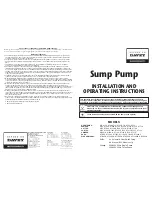
4
2.2) Installation procedure for rail web electrical connection
–
Drill rail web to
Ø
13,5 mm or,
if already drilled, use a suitable reamer to clean the hole
(Fig. 1).
–
Check the size of the hole with the
CAL135.145
“GO/NO GO” gauge
(Fig. 2):
- The hole size is correct
if only the green part enters the hole.
-
If the red part enters, the hole is too large
, in this case it is necessary to drill a new hole.
–
Insert the
AR...-1
copper bush into the rail web hole (Fig. 3).
– Ensure that the ram in the head is fully retracted and then firmly screw and tighten the
adaptor
M9M8
onto the tool head (Fig. 4).
– Introduce the plunger into the copper bush from the flanged side and screw and tighten
the plunger
OG10.5C
onto the adaptor
M9M8
(Fig. 4) using the recess in the gauge
CAL135.145.
–
Operate the tool (Fig. 5) by pressing the operating button (27) to pull the plunger
OG...
completely
through the bush and extrude the bush onto the surface of the hole.
To halt the advancement release the operating button and the motor will cut out.
Operate the pressure release lever (28) to retract the ram (16).
– The bush will also extrude itself around the opposite side of the rail web (Fig. 6).
2.3) Conductor assembly
– Crimp the lug onto the conductor.
– Assemble all components as shown in Fig. 7.
–
Fit the self-locking nut (Fig. 8) and tighten to
the torque setting indicated in the instruction
sheet of the bush kit.
FIG. 1
FIG. 2
FIG. 3
copper
bush
➞
➞
➞
NO
OK
➞
➞
➞
NO
OK
➞
➞
➞
NO
OK
YES
NO






























